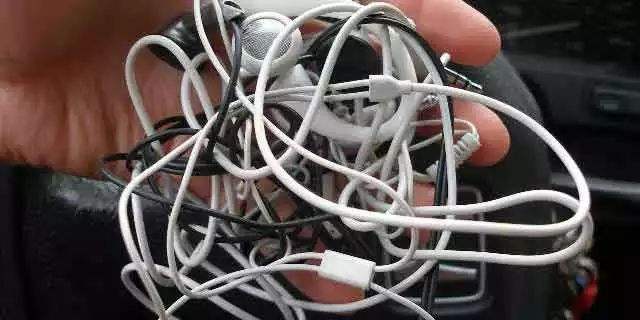There’s paper I can't find at the moment that analyzes the probability of a length of string tangling in your pocket in an hour as a function of its length. They found that a string of 23cm or more will probably form a knot within the first hour.
有一篇这样的论文,不过我现在找不到了,它分析了口袋里的绳子在1小时内打结的概率与绳子长度的关系,还提出了一个以绳长为x的函数。他们发现长度为23厘米或者以上的绳子可能在第1个小时内就打结。
Your headphones are longer than that and have three ends instead of two, so the probability they will remain untangled for an hour is even lower.
你的耳机比23厘米要长,而且总共有3个头,所以它在第1个小时里不打结的概率会更加低。
Back in 1989, Nicholas Pippenger wrote a paper about knots in random walks. What he showed is that if you have a random walk on the 3D lattice, the probability of that walk forming a knot goes to very, very quickly.
早在1989年,Nicholas Pippenger就曾写过一篇关于“随机游动中的绳结”的论文。文中写道如果你在一个3D环境中做随机游动,游动中形成绳结的概率将非常大。

There has been other work on knots in random walks since then, and the common thread seems to be that knots form much more readily than you think they do. If your earphones are jostling around in your pocket at all, the probability that they will tangle is high.
从那以后,陆续出了其他关于“随机游动中的绳结”的著作。普通的线比你想象中更容易打结,容易得多。如果你的耳机线不停地在你的口袋里互相推撞,它们打结的可能性将非常高。
来源:可可英语 //m.moreplr.com/read/201906/587453.shtml












